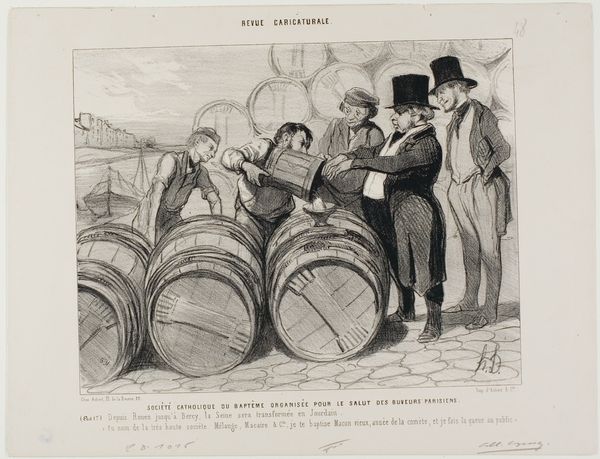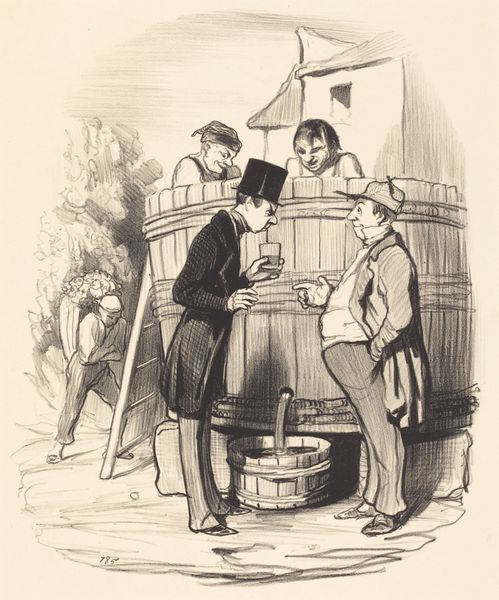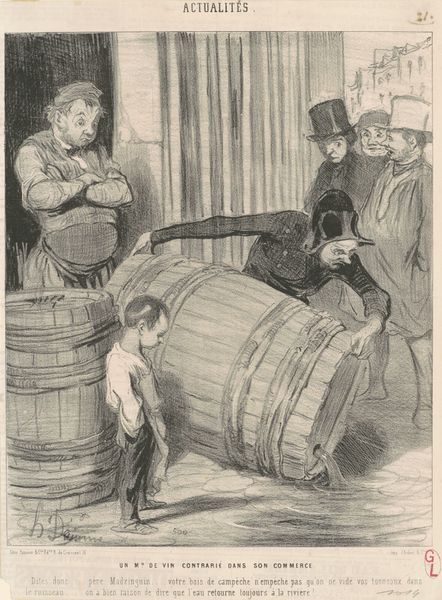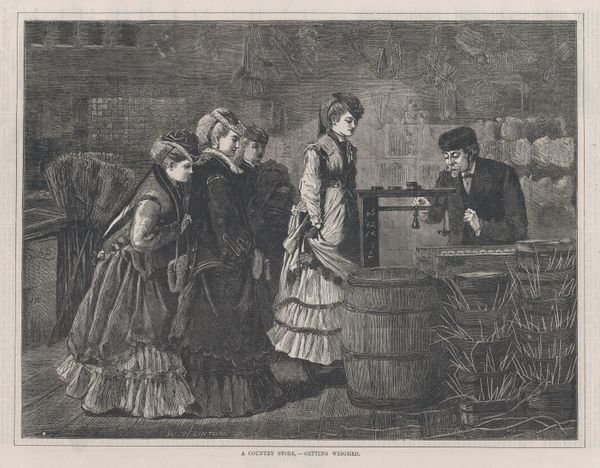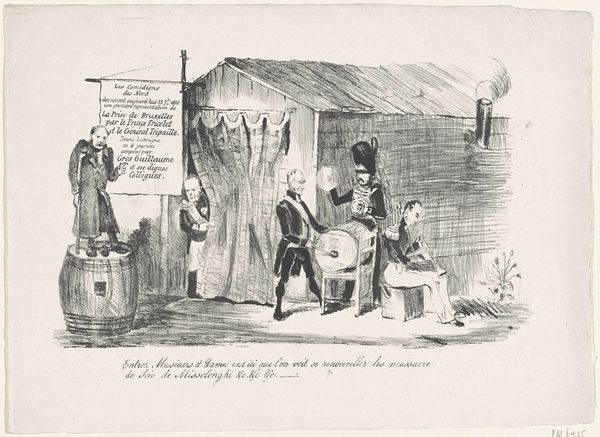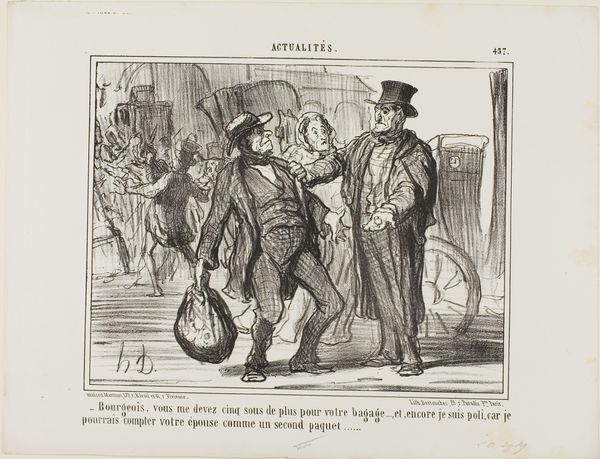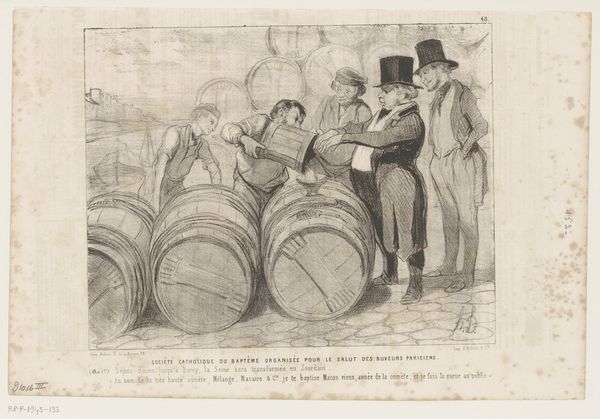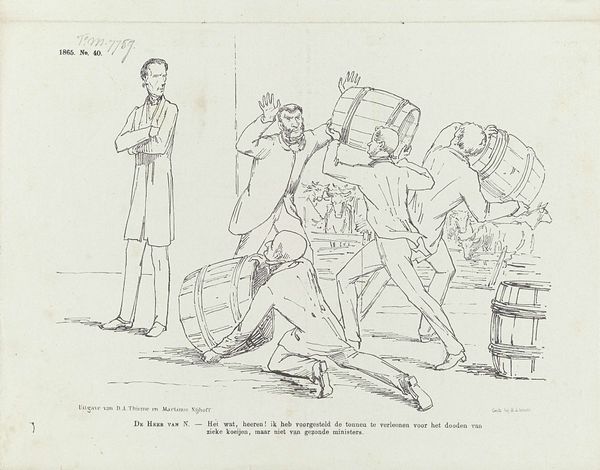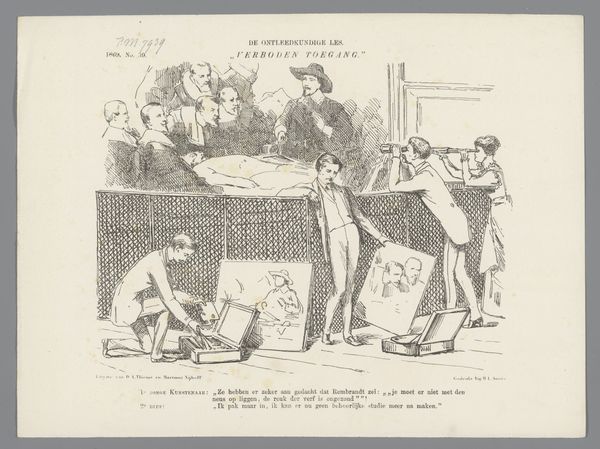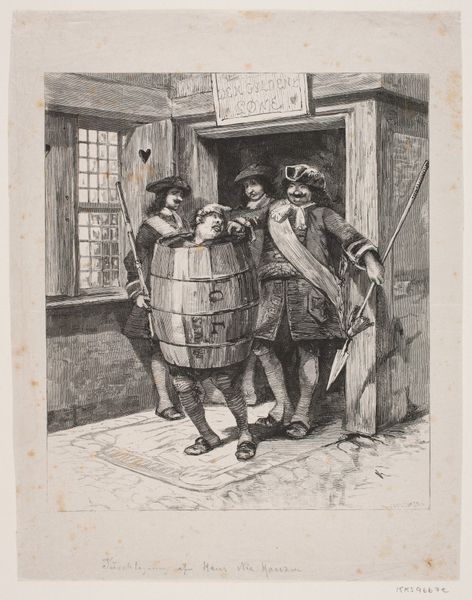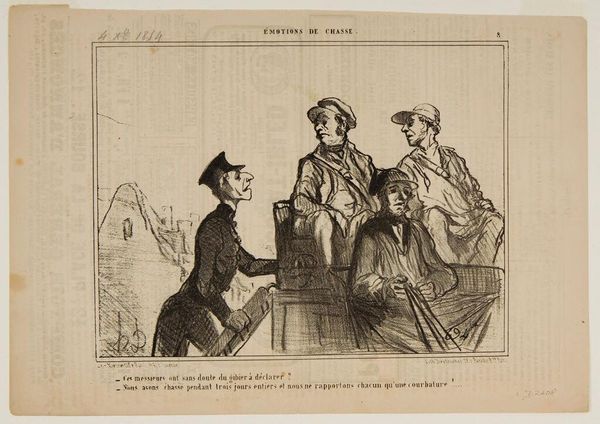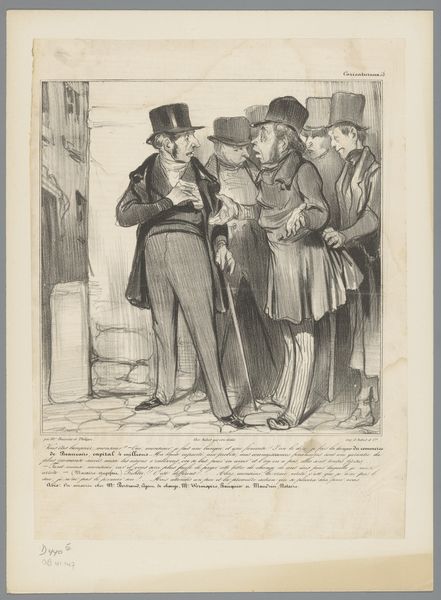
Impressions From the Vintage. “- What! You are treading bare-foot? - So what… you wouldn't want us to do it in our dancing shoes!,” plate 2 from Croquis D'automne 1856
0:00
0:00
Dimensions: 217 × 259 mm (image); 277 × 359 mm (sheet)
Copyright: Public Domain
Curator: Honore Daumier created "Impressions From the Vintage... Plate 2 from Croquis D'automne" in 1856. This lithograph, now residing at the Art Institute of Chicago, strikes me immediately with its crude honesty. Editor: Indeed. The figures are rendered with an almost brutal simplicity. Notice the sharp contrasts in the shading, particularly on the wine barrels. The textures achieved through simple hatching are remarkable and give volume to the scene. It definitely captures an honest portrayal of the wine-making process of its time. Curator: I agree. Consider Daumier's likely intention – a critique of social mores through caricature. We see the workers quite literally immersed in their labor, juxtaposed with the observers who are sharply dressed. There’s an implied commentary on the class divisions, a prevalent theme in Daumier's work. The title is equally fascinating when paired with the image, making you reflect on the bare foot workers Editor: Semiotically, we might say the bare feet become a powerful symbol of labor, contrasting with the “dancing shoes” mentioned in the subtitle. Daumier invites us to decode these figures and see not just individuals, but embodiments of broader societal tensions, rendered through visual techniques like exaggerating facial features to suggest personalities and class. Curator: Right, the exaggeration isn’t merely for comic effect, but sharpens the political message. I see a raw snapshot of the lives that powered 19th century France and of its economic engine: The common and laborious wine-making process. Editor: Precisely. The work, considered purely as an arrangement of line and tone, provokes contemplation and reveals a structured narrative beneath the humor. And I find myself now almost wanting to examine it closely as a key into the broader societal concerns and cultural landscapes of Daumier’s era. Curator: Ultimately, I think it highlights the timeless role of art as a social mirror and even gives a certain gravity to a wine-making process. Editor: Yes. An excellent summary. Its structural integrity, though seemingly casual, ensures the image resonates and the sharp angles truly hold its form for over a century and more to come.
Comments
No comments
Be the first to comment and join the conversation on the ultimate creative platform.
